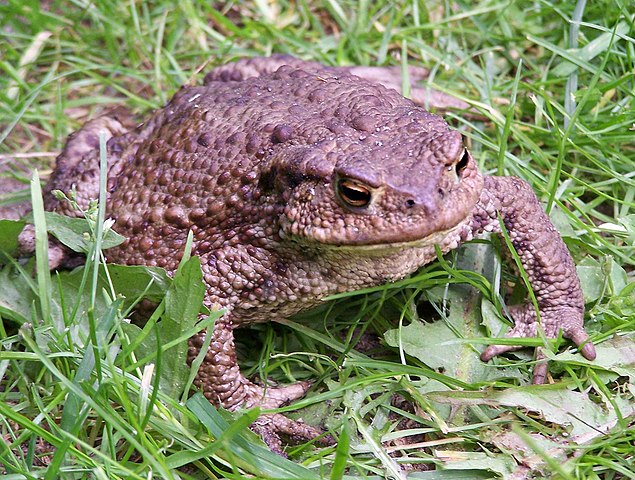The Mystery of the Exploding Toads

Pictured above is a European toad, a type of frog. As animals go, they’re not terribly special — their Wikipedia entry calls them the “common toad,” because, well, they’re really common around in most of Europe and much of Russia. (Here’s a map of their typical habitat.) If you’re walking around in an area where they typically are, you should expect to see a bunch of them — they are, after all, common.
But if you saw about 1,000 of them, dead? That’d be cause for concern. Especially if it looked like they had somehow exploded.
That’s exactly what happened in April of 2005, though. As the Associated Press reported at the time, “More than 1,000 toad corpses have been found at a pond in an upscale neighborhood in Hamburg and over the border in Denmark after bloating and bursting. [ . . . ] Local environmental workers in Hamburg have described it as a scene out of a horror or science fiction movie, with the bloated frogs agonizing and twitching for several minutes, inflating like balloons before they suddenly burst.”
Gross — but also scary. Toads don’t just blow up without explanation, and when communities of them do it all at once, finding the cause is important — not just for the toads, but for people. If the reason behind the blow ups was, say, a virus, humans could also fall victim to it. In fact, per the AP, “officials in Hamburg have advised residents to stay away from the pond [until the cause could be determined], which German tabloids have dubbed ‘the death pool.’”
Initial investigations suggested that there was nothing for people to worry about; in a follow-up AP story, authorities stated that “the pond water in Hamburg has been tested, and its quality is no better or worse than elsewhere in the city. The remains have been checked for a virus or bacteria, but none has been found.” Officials also considered that this was, somehow, a mass-suicide event — the toads, they theorized, had sensed that their habitat was becoming overpopulated and self-corrected. But then they came up with a simpler, and far more likely explanation: hungry crows.
Toads have lots of predators, and like most animals, also have some built-in defense systems. Specifically, when scared or otherwise at risk toads secrete a toxic steroid called bufagin into their skin. Many species of would-be toad eaters have learned to look for an easier meal rather than risk bufagin poisoning. But crows are smarter than most animals. And in this case, it’s the toads that likely paid the price, as the Independent explains:
Frank Mutschmann, who examined both dead and living Hamburg specimens at his Berlin research center, found all had identical circular incisions on their backs, small enough to be the work of a bird’s beak. Then he found something strange: their livers were missing. “There were no bite or scratch marks, so we knew the toads weren’t being attacked by a raccoon or rat, which would have also eaten the entire toad,” he said. “It was clearly the work of crows, which are clever enough to know the toad’s skin is toxic and realize the liver is the only part worth eating.
That’s enough to severely — and perhaps mortally — injure the toads, but not quite enough to explain the exploding part of the story. That, it turns out, is likely a defense mechanism gone wrong. The toads don’t notice when the crows are pecking at them — apparently, toads get pecked pretty often — so the crows are able to feast on the liver unabated. But once they’re done, the story continues. Mutschmann continues: “Only once the liver is gone does the toad realize it’s been attacked. It puffs itself up as a natural defense mechanism. But since it doesn’t have a diaphragm or ribs, without the liver there is nothing to hold the rest of its organs in. The lungs stretch out of all proportion and rip; the rest of the organs simply expel themselves.”
The end result? A murder of frogs by a murder of crows.
Bonus fact: As hinted at above, a group of crows is called a “murder.” The specific reason why has been lost to time, but as PBS explains, most explanations are “based on old folk tales and superstitions.” One leading explanation? “Many view the appearance of crows as an omen of death because ravens and crows are scavengers and are generally associated with dead bodies, battlefields, and cemeteries, and they’re thought to circle in large numbers above sites where animals or people are expected to soon die.”
From the Archives: Why Frogs Ribbit: They… kind of don’t.
